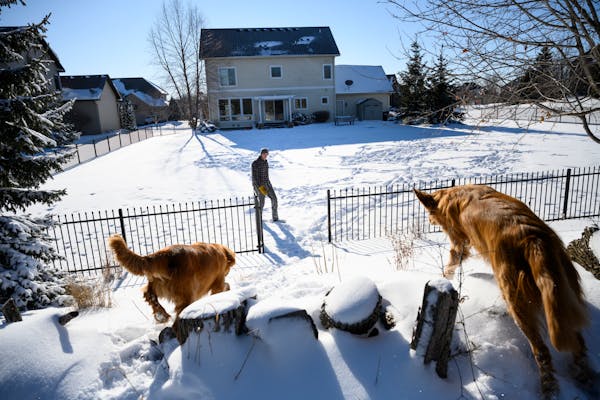Homebuilders in the Twin Cities are off to a busy start this year.
During January, builders were issued enough permits for 606 single-family houses, a 12% increase over last year at the same time, according to Housing First Minnesota, a trade group that represents area builders.
But multifamily construction wasn't robust. Builders submitted plans to build 899 rental apartments and other attached housing, a 26% decline over the previous year.
Combining all residential construction during the month, 637 permits were issued to build 1,505 units.
The increase in single-family building is in large part a response to a shortage of existing houses. Though the cost of new houses is on the rise, those buyers have far more options than those who want an existing home.
On Monday, brokerage Redfin said 38% of single-family homes for sale in the Twin Cities metro during December were new construction — the second-highest share of the 50 metros surveyed.
The Twin Cities exceeded the 34% national average, which was up from 25% a year earlier and the highest share on record, Redfin said.
Because existing homes tend to be less expensive, they sell more quickly, leaving a higher share of new homes unsold.
"A lot of pre-owned homes are being listed, but they are just selling off so quickly — typically in a matter of days — while new homes take longer to sell," Sheharyar Bokhari, a Redfin economist, said in a statement.
Nationwide, new homes have represented an increasing portion of available housing inventory over the past decade, with a major acceleration in mid-2020 after the pandemic began. With 39.5% of for-sale homes being newly built in the fourth quarter, the Houston metro had the the largest share of newly built homes.
Three California metros, which has a lack of vacant land and less space zoned for housing development, had the smallest shares of new-construction inventory including San Diego, where only 3.1% of for-sale homes were newly built and Anaheim at just 3.8%.
For the past several years, homebuilders have been trying to satisfy pent-up demand for housing, especially since the beginning of the pandemic when mortgage rates dipped to near all-time lows and stay-at-home orders enabled more people to work remotely.
In the Twin Cities metro, housing construction during 2021 slightly exceeded the year before, helping increase the supply of new houses available for purchase.
At the end of December, there were enough new single-family houses for sale to last 3.4 months, according to the Minneapolis Area Realtors. That was a 17% increase over the previous year, but still below the five- to six-month supply threshold that's considered the sign of a balanced market.
"The demand for new single-family homes has not let up since the pandemic started," said James Julkowski, 2022 president of Housing First Minnesota, in a statement. "With millennials reaching their peak home-buying age and existing housing inventory at historically low levels, we don't expect to see the hunger for new homes drop anytime soon."
Nationwide, housing starts during December were up 1.4% from the previous month and up 2.5% from the year before, according a monthly report from the U.S. Census Bureau. In contrast to Minnesota, the biggest gains nationally were for multifamily projects.
.

Health Department: E. coli infections traced to ground beef sold at Red Cow, Hen House, other restaurants
State of Minnesota sues Zaza Cannabis business, seeks destruction of illegal products

Minnesota health insurers warn of 'dire' premium spikes, lost coverage in 2026

She's buying downtown Minneapolis office space, sensing 'greatest opportunity of our lifetime'

